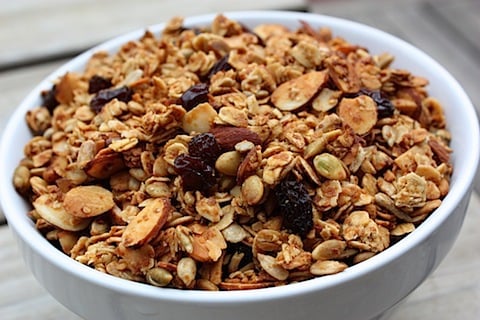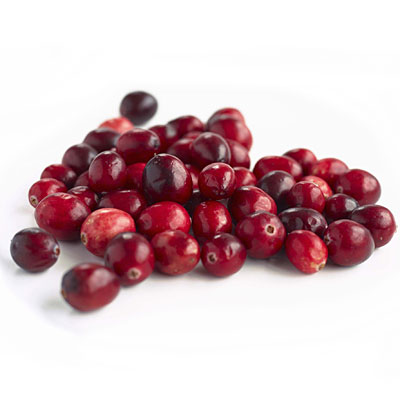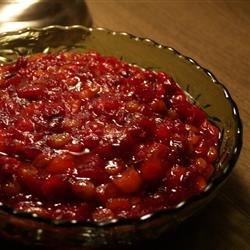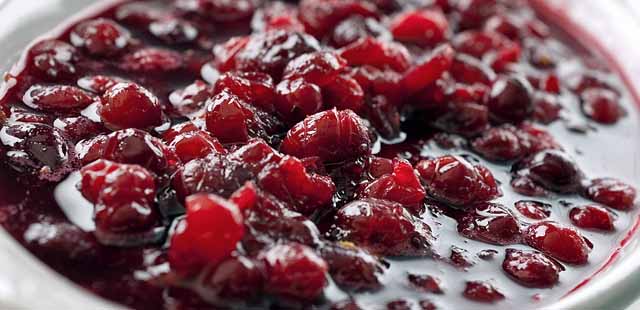Trans fats, also known as trans fatty acids, hydrogenated or partially hydrogenated vegetable oils, have become an increasingly significant part of the human diet, especially during the latter half of the 20th century and wherever processed foods are consumed.
Prior to 1910, dietary fats consisted primarily of butterfat, beef tallow, and lard, animal-based fats that were once the only trans fats consumed. However, the largest amount of trans fat consumed today is man-made, created by the processed food industry as a side effect of partially hydrogenating unsaturated plant fats, usually vegetable oils. Partially hydrogenated fats have been substituted for natural solid fats and liquid oils in many areas, especially the fast food, snack food, fried food, and baked goods industries.
High intake of trans fatty acids can lead to many health problems. Trans fats are abundant in fast food restaurants and many commercially- prepared foods. People who cannot afford or do not have access to healthier food often consume fast food. This can lead to obesity, high blood pressure, and a greater risk for heart disease in this population. For example, East Harlem mostly has fast food restaurants and bodegas with few healthy alternatives, which might be partly why 31% of adults in East Harlem are obese compared to 22% citywide and only 9% in the Upper East Side.
What are trans fats?
Trans fats are a type of unsaturated fat which is somewhat uncommon in nature but can be created artificially. Artificial trans fat is made when hydrogen is added to vegetable oil, a process called hydrogenation. Hydrogenation involves heating liquid polyunsaturated vegetable oil in the presence of hydrogen and finely ground particles of nickel metal. The oil turns into a solid fat, typically margarine and vegetable shortening.
Why were trans fats developed and included in certain foods?
Trans fats have been used in food for many reasons. Partial hydrogenation increases product shelf life and flavor stability and decreases refrigeration requirements. Many baked foods require semi-solid fats to suspend solids at room temperature; partially hydrogenated oils have the right consistency to replace animal fats such as butter and lard at lower cost. They are also an inexpensive alternative to other semi-solid oils such as palm oil.
Companies like using trans fats in their foods because they’re easy to use, inexpensive to produce, and last a long time. Trans fats give foods a desirable taste and texture. They are used in shortenings for deep-frying in restaurants and fast-food outlets, since oils with trans fats can be used many times in commercial fryers and last longer than most conventional oils before becoming rancid. In the early 21st century, non-hydrogenated vegetable oils that have lifespans exceeding that of the frying shortenings became available.
Is trans fat worse than saturated fat in promoting heart disease?
The Food and Drug Administration (FDA) and the Institute of Medicine and the American Heart Association both agree that trans fatty acids have a stronger effect on the risk of coronary heart disease than saturated fatty acids.
Why are trans fats so unhealthy?
Partially hydrogenated vegetable oils are extremely harmful to heart and vascular health, because they elevate bad cholesterol (“low density lipoproteins” or LDL) in the bloodstream, while lowering good cholesterol (“high density lipoproteins” or HDL). These changes increase the risk of fat deposition within artery walls, sclerosis (hardening of artery walls), atherosclerosis, heart disease, heart attack, diabetes, and stroke. Efforts are being made to remove trans fats from our food supply.
Do trans fats occur naturally?
Trans fat found in foods can either be natural or artificial. Naturally occuring trans fat is produced in the gut of some grazing animals, and that is why small amounts can be found in animal-based foods such as butter, butterfat, milk, and certain meats including beef, lamb, and pork. However, trans fats in processed foods seem to be more harmful than naturally occurring trans fats.
Do naturally occurring trans fats pose the same risks as manufactured ones?
No. Naturally occurring trans fats do not have the same bad effects on cholesterol levels as trans fats that have been industrially manufactured. Research reported in the American Journal of Clinical Nutrition indicates that naturally occurring trans fats found in dairy and meat products, when eaten in moderation, are not as harmful as manmade trans fats and do not increase heart risks.
Where are artificial trans fats found?
Trans fats are found in hardened vegetable fats such as stick margarine, vegetable shortenings like Crisco, and foods made with them, including many commercially prepared baked goods (biscuits, crackers, cookies, cakes, muffins, pancake mixes, pastries, pie crusts, pizza dough, and other items), packaged mixes, almost all fast food (doughnuts, French fries, etc.), as well as many commercially prepared nut butters, spreads, candies, chocolates, and snack foods:
Whole Milk and cheese 18.8 Natural
Butter 5.9 Natural
Eggs 0.9 Natural
Meat and meat products 10.3 Natural
Oils and fats 35.5 Mainly resulting from hydrogenation
Biscuits and cakes 16.5 Mainly resulting from hydrogenation
Savoury pies, etc 3.5 Mainly resulting from hydrogenation
Chips, french fries 4.5 Mainly resulting from hydrogenation
Since fast-food chains often use different fats and cooking techniques in different locations, trans fat levels in fast food can vary from one region to another.
Why do artificial trans fats produce serious health problems?
Hydrogenated oils increase serum cholesterol more than other types of fats. The addition of hydrogen to oil makes the trans fat more difficult to digest, and the body seems to treat the trans fat as a saturated fat. One theory is that human lipase enzyme, a water-soluble enzyme that helps to digest, transport, and process dietary lipids such as triglycerides, fats, and oils in most living organisms cannot metabolize trans fats. Trans fatty acids may also impair the metabolism of long-chain polyunsaturated fatty acids (LCPUFAs).
Can a food product list the amount of trans fat as 0 grams on the Nutrition Facts panel if the ingredient list indicates that it contains “partially hydrogenated vegetable oil?”
Yes. Food manufacturers are allowed to list amounts of trans fat with less than 0.5 gram (1/2 g) as 0 (zero) on the Nutrition Facts panel. As a result, consumers may find products, like brownie mix, corn muffin mix, pizza, packaged cookies, etc., that list 0 g trans fat on the panel, which actually contain “partially hydrogenated vegetable oils” like soybean or cottonseed oil or “shortening.” This means the food contains very small amounts (less than 0.5 g) of trans fat per serving. However, if a person eats more than 1 serving at a time, or, for example, a whole bag of popcorn or chips, then a large amount of unhealthy trans fat will be ingested.
Is it safe to consume small amounts of trans fats?
No! There is no safe level, recommended daily amount, or tolerable upper limit for trans fat consumption. This is because any incremental increase in trans fat intake increases the risk of coronary heart disease. Always read the ingredient list on a food package. Even if the package’s nutrition label indicates 0 g trans fats, if any trans fat is mentioned in the ingredient list, such as a “hydrogenated or partially hydrogenated vegetable oil and tropical oils, like coconut and palm oil,” avoid buying that food item.
Health effects of trans fats:
- Before 1990, very little was known about the health effects of trans fats. In the 1990s, research began identifying their adverse health effects.
- Whether of animal or plant origin, trans fatty acids are not essential and provide no benefit to human health.
- While both saturated and trans fats increase LDL levels, trans fats also lower HDL levels, significantly increasing the risk of coronary heart disease.
- Dietary trans fatty acids promote more coronary heart disease than saturated fatty acids.
- Trans fats have been shown to increase the risk of Type 2 diabetes.
- It has been established that trans fats in human milk fluctuate with maternal consumption of trans fat, and that the amount of trans fats in the bloodstream of breastfed infants fluctuates with the amounts found in their milk. Reported percentages of trans fats (compared to total fats) in human milk range from 1% in Spain, 2% in France, 4% in Germany, and 7% in Canada and the United States.
Due to the damage trans fats do to the entire cardiovascular system, consuming them may actually increase your risk of other chronic health problems:
- Alzheimer’s Disease: Consumption of both trans fats and saturated fats may hasten the development of Alzheimer disease, by impairing memory and learning, and promoting inflammation in and around the hippocampus, the part of the brain responsible for learning and memory.
- Cancer: The American Cancer Society states that a relationship between trans fats and cancer “has not been determined.” One study has found a positive connection between trans fat and prostate cancer. However, a larger study found a correlation between trans fats and a significant decrease in high-grade prostate cancer. An increased intake of trans fatty acids may raise the risk of breast cancer significantly, according to results from the French part of the European Prospective Investigation into Cancer and Nutrition.
- Obesity: Animal studies indicate that trans fats may increase weight gain and intra-abdominal deposition of fat, and cause insulin resistance.
- Liver dysfunction: Trans fats are metabolized differently by the liver than other fats and interfere with delta 6 desaturase, an enzyme involved in converting essential fatty acids to arachidonic acid and prostaglandin, both of which are important to the functioning of cells.
- Infertility in women
- Depression
- Behavioral irritability and aggression: A 2012 observational analysis of subjects of an earlier study found a strong correlation between dietary trans fat acids and self-reported behavioral aggression and irritability, suggesting but not establishing causality.
How can I avoid trans fats?
- Read the Nutrition Facts panel and check the ingredient list on foods you buy at the store. The amount of trans fats in a particular packaged food should be listed in the Nutrition Facts panel. Ingredients referred to as “partially hydrogenated oils” are trans fats.
- When eating out, ask what kind of oil foods are cooked in.
- Replace trans fats in your diet with monounsaturated or polyunsaturated fats.*
Are coconut oil and palm oil healthy?
Coconut oil and palm oil are higher in saturated fat than other plant oils. They are less harmful than partially hydrogenated oil, which is high in trans fats. But they are less beneficial for your heart than plant oils that are rich in unsaturated fats such as olive, canola, sunflower, and other oils. Coconut oil increases good cholesterol, which may make it okay when cooking a dish that needs a little hard fat. Generally, it is better to cook with extra-virgin olive oil. The healthy fats in extra-virgin olive oil are stable at temperatures used in home cooking. However, for deep-fat frying or stir frying use an oil that’s more stable, like peanut oil.
*Healthy fats include:
- Monounsaturated fats: found in olive, canola, and peanut oils, nuts, and avocados.
- Polyunsaturated fats: found in other plant-based oils, such as safflower, corn, sunflower, soybean, sesame, and cottonseed oils.
References:
- “Eat Healthy Fats.” The Mayo Clinic Diet. Mayo Foundation for Medical Education and Research. Published by Merle Good. p. 28-29. 2010.
- “Questions and Answers Regarding Trans Fat.” United States Food and Drug Administration. 10903 New Hampshire Avenue, Silver Spring, MD 20993, [Tel. 1-888-INFO-FDA (1-888-463-6332)]. 11/07/13. (Source: www.fda.gov/Food/PopularTopics/ucm373922.htm)
November 7, 2013












